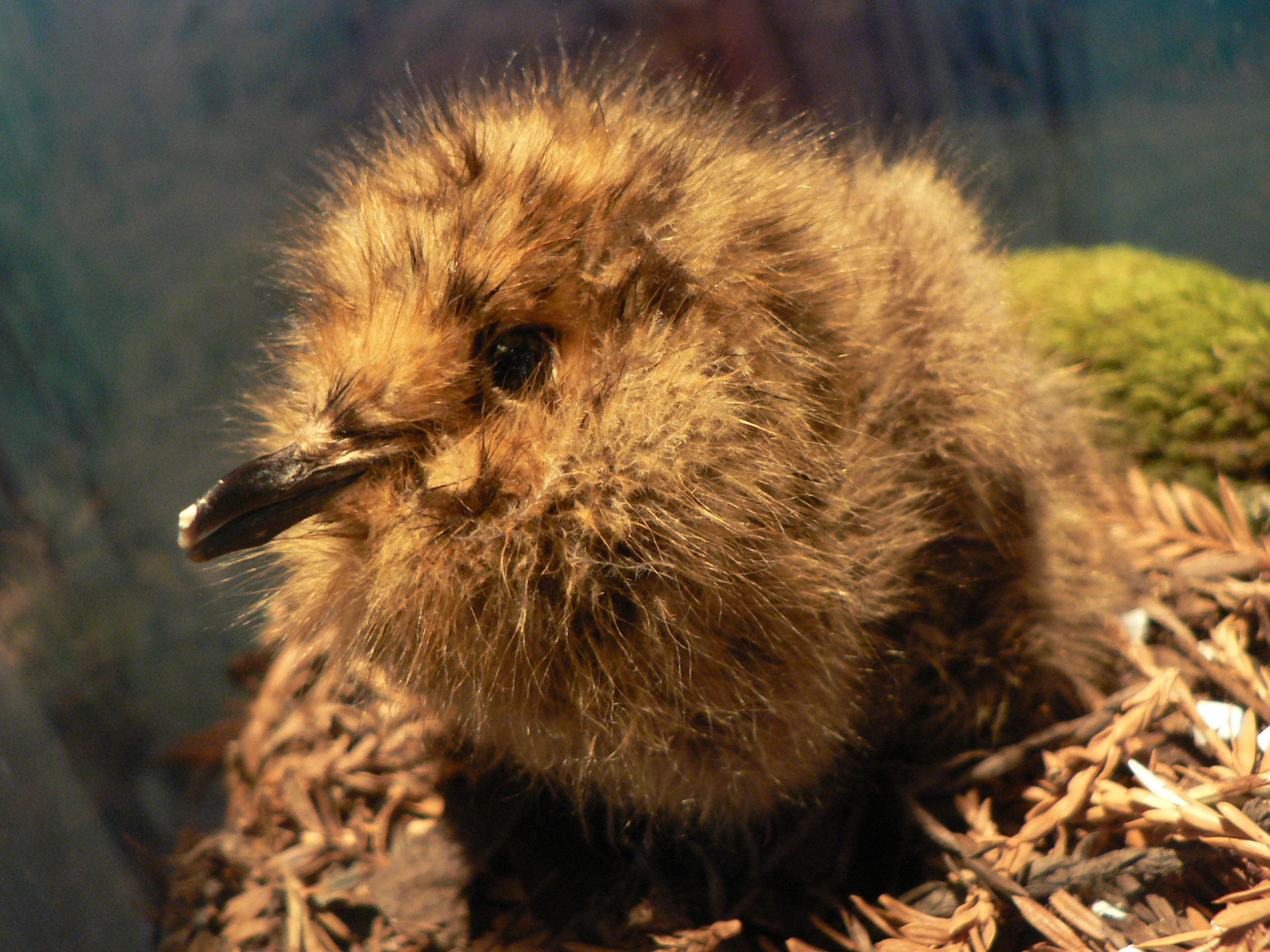Marbled Murrelet (Brachyramphus marmoratus) - Wiki Marbled Murrelet
From Wikipedia, the free encyclopedia
[Photo] Juvenile Marbled Murrelet, Brachyramphus marmoratus at California Academy of Science and Steinhart Aquarium, San Francisco (at the temporary accommodation on Howard Street). Taxodermy specimen. Photo credit: Peter Halasz. (User:Pengo) http://en.wikipedia.org/wiki/User:Pengo
The Marbled Murrelet (Brachyramphus marmoratus) is a small seabird from the North Pacific. It is an unusual member of the auk family, nesting far inland in old growth forests. Its habit of nesting in trees was not known until a tree-climber found a chick in 1974. The Marbled Murrelet , together with the closely related Long-billed Murrelet and Kittlitz's Murrelet are thought to have experienced declines in numbers recently. Their decline and association with forests have made them a flagship species in the forest preservation movement.
Description
The Marbled Murrelet is a small (25 cm), chunky auk with a slender black bill. It has pointed wings and plumage that varies by season. The non-breeding plumage is typically white underneath with a black crown, nape, wings and back. The bird closely resembles its closest relative, the Long-billed Murrelet. In fact, these species were considered conspecific up until 1998. They are virtually identical. In breeding plumage, both have a brown mottled body and face. The Long-billed has a pale white throat, lacking in the Marbled. In winter plumage, the Marbled Murrelet has a white neck collar, absent in Long-billed. The Marbled Murrelet is shorter billed and slightly smaller than the Long-billed Murrelet.
Behaviour and breeding
The Marbled Murrelet feeds at sea both in pelagic offshore areas (often associating with upwellings) and inshore in protected bays. It feeds on principally on sandeels, also taking herring, capelin and shiner perch. The bird has not been known to wander from of the Pacific coast of North America, all inland and eastern Brachyramphus records being of the closely related Long-billed Murrelet.
The breeding behaviour of the Marbled Murrelet is very unusual, unlike seabirds outside its genus it doesn't nest in colonies or even close to the sea, instead nesting in on branches of old-growth conifers such as Western Hemlock, Sitka Spruce and Douglas Fir, as far as 60 km inland. It lays one egg on a platform of lichen or moss on these branches (less often on the ground). The egg is incubated for a month, then fed for around 40 days until the chick is able to fledge. The chick then leaves the nest and flies unaccompanied to the sea. Breeding success is low and chick mortality high.
Marbled Murrelets and humans
The Marbled Murrelet is considered globally threatened, with some evidence of decline across its range over the last few decades. The biggest threat to the murrelet was long considered to be loss of old growth forest to logging but other factors including climate-driven changes in ocean conditions are now considered important. The populations in Washington, Oregon and California were listed as threatened in 1992 by the U.S. Fish and Wildlife Service due to concerns about loss of nesting habitat, entanglement in fishing gear and oil spills. The remaining populations (Alaska and Canada) are currently under review. The species became a flagship species in efforts to prevent the logging of old-growth forests along the Pacific coast from California to Alaska.
http://en.wikipedia.org/wiki/Marbled_Murrelet
| The text in this page is based on the copyrighted Wikipedia article shown in above URL. It is used under the GNU Free Documentation License. You may redistribute it, verbatim or modified, providing that you comply with the terms of the GFDL. |
